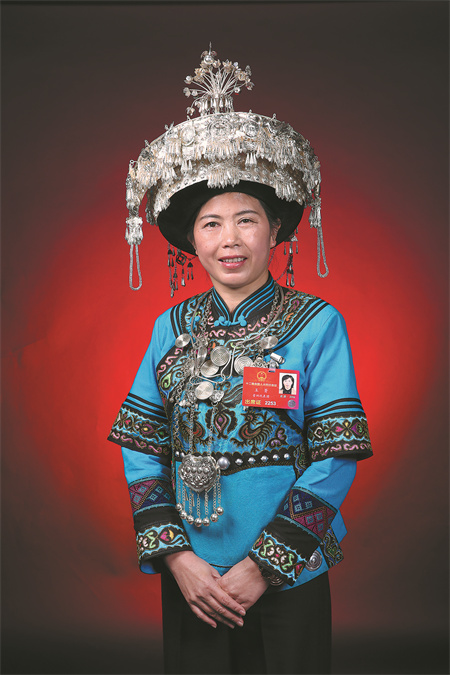

"It was magic how the vivid patterns of various styles then slipped through their fingers." Wang started to learn how to make Bouyei clothes at 10 years old.
She came to appreciate the whole process, from yarn-dyed weaving to batiking, tie-dyeing, cross-stitching and brocading.
In particular, batiking and tie-dyeing are common coloring techniques. For batiks, Bouyei women can draw patterns on cloth directly with a wax knife, and then go through several processes, such as waxing, dyeing, dewaxing and cleaning before transforming plain cloth into brightly-colored fabric art.
As for tie-dyeing, the white cloth is ingeniously tied before being immersed into the dye, which does not reach the parts of cloth that are tied. These parts therefore retain their original color, and form the strongly contrasting pattern.
Stitching is frequently applied to make decorations on collars, cuffs, shoulders and skirts.
It takes anything from several days to several months to finish a costume, depending on the style and complexity of the patterns.
Wang's early exposure to the craft predisposed her to the costume details. She paid special attention to patterns on other people's clothes and would later try her hand replicating them on rags at home.
Whenever opportunity arose, Wang would engage in needlework with local women, making embroideries and sewing bags.
"It became part of my life," she says.
A turning point came when, after graduating from middle school, Wang found admission information for a Beijing-based costume research institute in the pages of a magazine at the local library.
It rekindled her passion to make a career out of the traditional clothing.
After saving enough money by doing odd sewing jobs, in 1991, Wang embarked on a journey to Beijing.
She spent time building up her knowledge of fine arts, while honing her sketching and costume design skills.
Two years later, Wang graduated with an intermediate costume designer certificate. As many of her classmates explored opportunities in better developed areas, such as Beijing and China's coastal cities, Wang insisted on coming back to Guizhou to apply what she had learned to the traditional clothing of her beloved community.
"I just felt like my roots were here," she says.